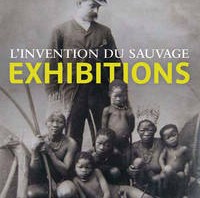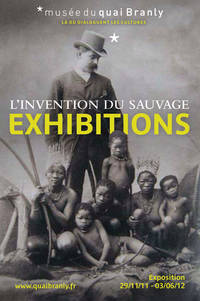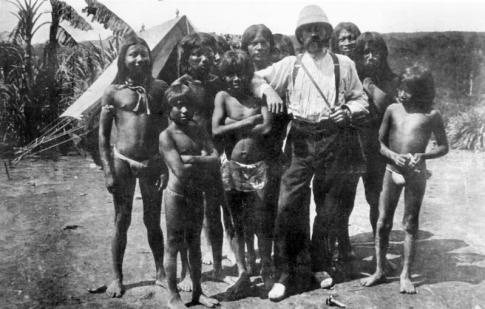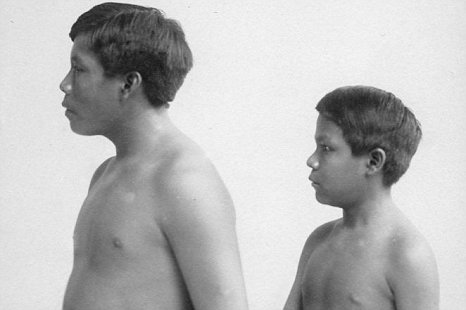One of the most talked-about exhibitions at the moment is on at the new musée du quai Branly in Paris: Human Zoos. The museum specialises in ethnography and the dialogue of cultures. The focus of this current exhibition is the prevalence in Europe and elsewhere of representatives of other human cultures in our zoos. The exhibition traces the history of the way the West looked at the non-West during the colonial era and beyond
The invention of the savage unveils the history of women, men and children brought from Africa, Asia, Oceania and America to be exhibited in the Western world in circus numbers, theatre or cabaret performances, fairs, zoos, parades, reconstructed villages or international and colonial fairs. The practice started in the 16th Century royal courts and continued to increase until the mid-20th Century in Europe, America and Japan.
The quai Branly exhibition reminded me of the two Putamayo Indians the Irish parliamentarian Roger Casement (1864-1916) brought back from the Amazon in 1910. They were exhibited in London as “living curiosities”.
Casement had previously investigated and exposed abuses in the Belgian Congo Free State. In Africa he encountered Joseph Conrad, author of the best-known account of colonial atrocity, Heart of Darkness. Sent to South America to investigate abuses on the rubber plantations of the British-directed Peruvian Amazon Company, or PAC, Casement returned with two Indians whose faces resonate still, a hundred years later.
Knighted for his work on behalf of the Amazonian Indians, Casement was hanged for treason following the 1916 Easter Rising in Dublin. Controversy still surrounds the authenticity of what are known as Casement’s “Black Diaries”, wherein he details his homosexual encounters.
Dr Lesley Wylie, Lecturer in Latin American Studies in the School of Modern Languages, University of Leicester, discovered the photos recently during her research for a book on the Putumayo, a border region in the Amazon. Her research was published in the August 2010 edition of Irish Studies Review. The photographs of the two Huitoto tribesmen were taken by John Thomson, a pioneering travel photographer and photojournalist, born in Edinburgh, who had made his name in the Far East, where he spent the best part of ten years from 1862-1872.
According to Wylie, the two Huitoto were from La Chorrera, a disputed territory harboring a secretive rubber plantation along the borders of Colombia, Peru and Brazil. The two were called Omarino and Ricudo. Omarino had been ‘presented’ to Casement for payment of a pair trousers and a shirt while Ricudo, a married man of 19, had been separated from his wife after Casement ‘won him’ in a game of cards. On 1 August 1911, the two Amazonian youths were on the front page of The Daily News. They are reported to have said: “London is very beautiful, but the great river and the forest, where the birds fly, is more beautiful. One day we shall go back.”
Survival International estimates that 90 percent of the Amazon’s indigenous groups were wiped out during the rubber boom. The Huitoto tribe currently numbers about 3000 survivors. Casement considered sending his two “living curiosities” to boarding school, but thought better of it and left the two men in the care of the British consul in Iquitos, Peru. They disappear from history at that point.
The quai Branly Human Zoos exhibition in Paris is described here in French:
[youtube]pXE0CvNZZ_w[/youtube]








13 thoughts on “The Human Zoo”